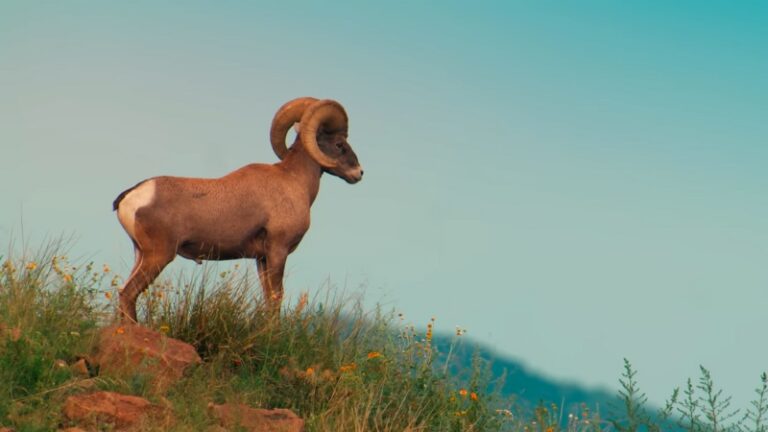Texas boasts some of the most spectacular wildlife viewing opportunities in North America, yet many of its wildlife trails remain hidden from mainstream tourism. The Lone Star State boasts over 700 species of birds, 142 species of reptiles and amphibians, and countless mammals across diverse ecosystems.
Most nature enthusiasts flock to popular destinations like Big Bend or South Padre Island, but the real treasures lie along lesser-known paths where wildlife thrives away from crowds.
Astute wildlife watchers know the secret: underrated Texas nature trails offer the best opportunities to observe animals without competition from other visitors.
You’ll discover hidden gems where professional wildlife photographers capture award-winning shots, where birders record rare species sightings, and where families create lasting memories surrounded by unspoiled nature.
Get ready to explore ten extraordinary trails that most Texans have never heard of.
The Hidden World of Texas Wildlife Trail Systems
View this post on Instagram
Texas operates one of the most comprehensive wildlife trail networks in the United States. The state has designated numerous trail systems and nature preserves as part of the “Great Texas Wildlife Trails” program, which launched 25 years ago to promote conservation through nature tourism.
Professional wildlife biologists select trail locations based on species diversity, habitat quality, and seasonal migration patterns. The trails connect state parks, wildlife management areas, national wildlife refuges, and private conservation lands into cohesive viewing circuits.
Rangers update trail conditions and wildlife activity reports monthly during peak seasons.
Smart visitors use the trail system strategically. Spring migration brings the highest species counts, particularly along coastal routes. Fall migration offers better photographic opportunities with clearer weather and predictable animal behavior.
The winter months provide excellent viewing opportunities for waterfowl and resident species, as they avoid the summer heat stress.
East Texas Pine Belt Wildlife Trail
Deep in the pine forests of East Texas lies a 2.8-mile loop trail that most outdoor enthusiasts overlook. The East Texas Pine Belt Wildlife Trail winds through Davy Crockett National Forest near Ratcliff, offering exceptional wildlife viewing in Texas among towering loblolly pines and hardwood bottoms.
The trail passes three distinct ecosystems within its short distance. Upland pine forests host red-cockaded woodpeckers, brown-headed nuthatches, and pine warblers.
Creek bottoms support prothonotary warblers, wood ducks, and occasionally river otters. Open meadow areas attract white-tailed deer, wild turkeys, and a variety of butterfly species.
Early morning visits between April and June yield the best results—songbird activity peaks just after sunrise when temperatures remain cool and insects are most active. Professional birders report seeing over 60 species during single visits to the area.
- Notable species include: The Red-cockaded Woodpecker, the Prothonotary Warbler, and the River Otter.
- Best viewing times: Dawn to 9 AM, April through October.
- Trail difficulty: Easy to moderate.
West Texas Desert Bighorn Trail
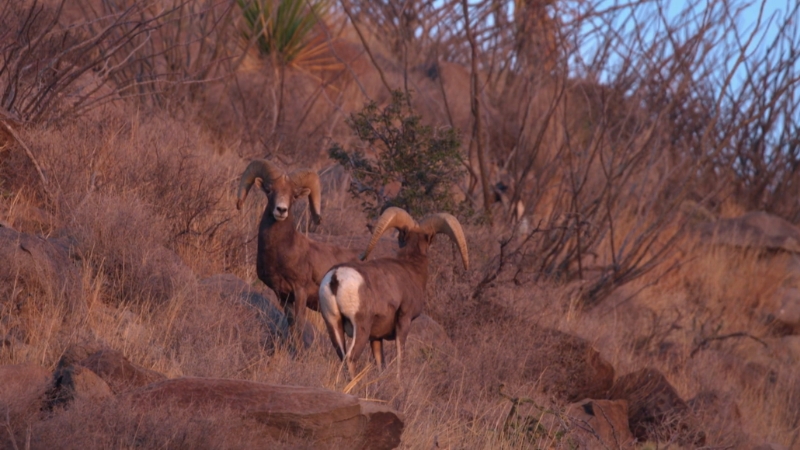
The rugged Franklin Mountains outside El Paso conceal a 4.2-mile hiking trail where desert bighorn sheep roam freely. Franklin Mountains State Park protects the most extensive urban wilderness park in Texas, yet most visitors never venture beyond the visitor center.
Desert bighorn sheep populations dropped to critically low numbers by the 1950s due to overhunting and habitat loss. Today, approximately 200 sheep inhabit the Franklin Mountains, representing one of the most successful wildlife recovery programs in the state of Texas.
The trail ascends gradually through creosote bush flats before entering rocky canyon systems where sheep prefer steep terrain.
- Trail stats: 4.2 miles round-trip, 800 feet elevation gain.
- Best viewing: Early morning and late afternoon, October through March.
- Difficulty: Moderate to challenging.
Coastal Prairie Preserve Loop
Hidden along the upper Texas coast near Anahuac lies a spectacular 3.5-mile boardwalk and trail system through pristine coastal prairie habitat. The Texas Mid-Coast National Wildlife Refuge protects some of the last remaining coastal prairie in North America, supporting critical habitat for numerous endangered species.
Coastal prairie once covered over 6 million acres along the Texas coast. Today, less than 1% of the original habitat remains intact. The preserve protects critical habitat for Attwater’s prairie-chicken, aplomado falcon, and whooping crane.
Over 300 bird species use the area seasonally, making it one of the premier birding locations along the Great Texas Coastal Birding Trail.
Hill Country Bat Cave Trail
Central Texas hills conceal one of North America’s largest bat populations along a little-known 1.8-mile interpretive trail. The Bracken Bat Cave near San Antonio hosts over 15 million Mexican free-tailed bats during summer months, creating one of the most spectacular wildlife displays in Texas.
The cave system formed over millions of years in the Edwards Plateau limestone. Female bats gather here each summer to give birth and raise young before the fall migration to Mexico. The daily emergence flights represent one of the largest concentrations of mammals anywhere on Earth.
South Texas Brush Country Ocelot Trail
Deep in the thorny brush country of extreme South Texas runs a challenging 5.2-mile trail where North America’s most elusive wild cat still roams. Laguna Atascosa National Wildlife Refuge protects critical habitat for the endangered ocelot, with fewer than 50 individuals remaining in the United States.
Ocelots require dense brush cover for hunting and protection. The thornscrub habitat of the Lower Rio Grande Valley provides ideal conditions for secretive cats that hunt primarily at night, targeting small mammals, birds, and reptiles.
Motion-activated cameras throughout the refuge document ocelot movements and behavior patterns.
Panhandle Pronghorn Prairie Trail
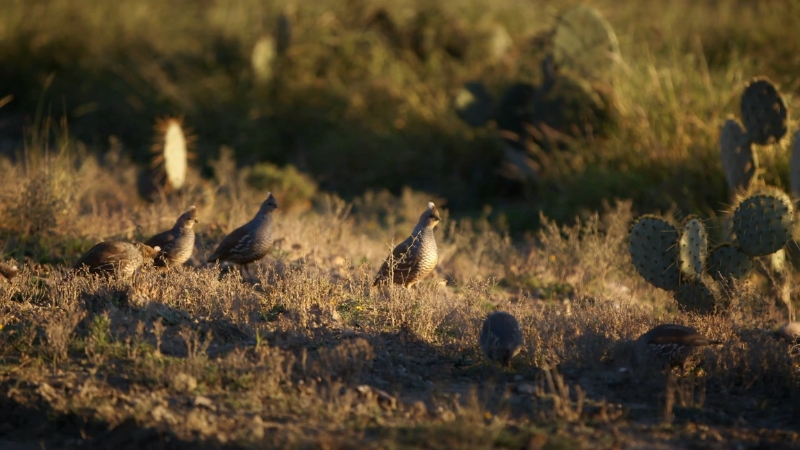
The vast grasslands of the Texas Panhandle conceal a remarkable 6.8-mile trail system, where pronghorn antelope race across the endless prairie. Muleshoe National Wildlife Refuge protects critical habitat for incredible animals capable of running at speeds of up to 60 miles per hour across open terrain.
Pronghorn evolved alongside now-extinct American cheetahs, developing extraordinary speed for predator evasion. The Texas Panhandle supports one of the largest pronghorn populations remaining in the species’ range.
The trail system follows old ranch roads across native shortgrass prairie, which is maintained through prescribed burning and grazing.
Trans-Pecos Desert Springs Trail
Hidden in the remote mountains of West Texas lies a 3.4-mile desert oasis trail where rare species survive in isolated springs. Davis Mountains State Park protects several natural springs that create unique habitat islands in the Chihuahuan Desert environment.
Desert spring ecosystems support plants and animals found nowhere else in the state of Texas. Isolated water sources allowed species to survive ice ages and climate changes that eliminated them from surrounding areas.
The springs create microclimates supporting relic forests and specialized wildlife communities.
The trail connects three major spring systems through rugged desert terrain. Limpia Creek maintains a year-round flow, supporting native fish species, riparian birds, and diverse plant communities.
Oak groves surrounding the springs provide critical habitat for migratory birds and resident wildlife species.
Pineywoods River Bottom Trail
@jsorsby Tyler State Park in the East Texas Piney Woods sits a few miles down the road from Camp Ford, which was the largest prisoner of war camp west of the Mississippi River during the Civil War. 🧢👕: @Chill Country 🩳: @Bearbottom 💦: @rambleraustin #tylertx #campford #easttexas #pineywoods #texas ♬ original sound – John Sorsby – Texas Outdoors
Along the remote Neches River in East Texas runs a pristine 4.6-mile trail through bottomland hardwood forests that few people ever see. The Big Thicket National Preserve protects some of the last remaining river-bottom wilderness in Texas, supporting an incredible diversity of plants and animals.
River bottom forests create unique ecological conditions supporting species at the northern or southern limits of their ranges. Over 1,200 plant species grow within the preserve boundaries, more than in many entire states.
The trail follows old logging roads through dense forest canopy where bald cypress and tupelo trees grow directly from seasonal floodwaters.
Wildlife in the area includes black bears, river otters, alligators, and over 200 bird species. The area supports the northernmost population of American alligators in the state of Texas.
Black bears recolonized the region naturally after decades of absence. Photography opportunities abound throughout the seasons.
High Plains Playa Lakes Circuit
Scattered across the Texas High Plains are thousands of shallow wetlands known as playa lakes, which create exceptional wildlife viewing opportunities along a 12-mile driving circuit.
Playa lakes formed over thousands of years through unique geological processes, creating temporary wetlands that serve as critical habitat for millions of waterfowl and shorebirds.
The driving circuit connects six major playa lakes near Lubbock through county roads. Each lake supports different species depending on water depth, vegetation, and surrounding land use.
Peak viewing occurs during spring and fall migration when thousands of birds use the wetlands simultaneously.
Professional ornithologists rate the playa lakes among the most important bird habitats in North America. The playa lakes support more waterfowl than any other habitat type in the Central Flyway.
Agricultural conversion poses a significant threat to the remaining playa lakes throughout the region.
Season
Primary Species
Peak Months
Spring
Shorebirds, early waterfowl
March-April
Fall
Peak waterfowl migration
September-November
Winter
Diving ducks, geese
December-February
Guadalupe River Cypress Trail
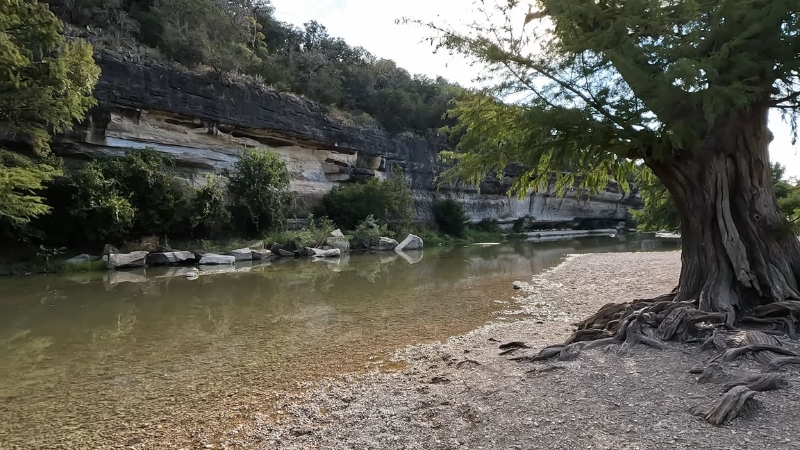
Along the crystal-clear waters of the Guadalupe River near Hunt lies a magical 2.9-mile trail through ancient bald cypress groves. Guadalupe River State Park protects one of the most beautiful river systems in Texas, yet most visitors never explore beyond the swimming areas.
Bald cypress trees can live over 1,000 years, creating cathedral-like groves along the riverbank. The trees develop distinctive “knees” that emerge from the water during periods of low water flow.
Crystal-clear spring water maintains consistent temperatures year-round, supporting a diverse array of aquatic life, including the endemic Guadalupe bass.
The trail follows the river through different ecological zones, including cypress swamps, limestone bluffs, and prairie openings. The area supports over 240 bird species, including several at the edge of their ranges.
Green kingfishers reach their northern limit along the Guadalupe River.
Essential Gear for Texas Wildlife Trails

Proper equipment enhances safety, comfort, and viewing success on Texas wildlife trails. Regional differences in climate, terrain, and wildlife require specific gear recommendations.
- Optical equipment: Quality binoculars are the most crucial investment for wildlife viewing. 8×42 models provide excellent performance for most situations. Spotting scopes with 20- 60x zoom capabilities help with long-distance viewing on prairie and wetland trails.
- Clothing recommendations: Layered clothing systems are designed to adapt to changing weather conditions. Neutral colors reduce visibility to wildlife. Long pants and sleeves protect against insects, thorns, and sun exposure. Quality hiking boots provide ankle support and traction.
- Safety equipment: First aid kits should include supplies for treating cuts, insect bites, and snake bites. Emergency whistles help signal for help in remote areas. GPS devices prevent getting lost on complex trail systems. Adequate water supplies are critical during the summer months.
Equipment Category
Essential Items
Optional Upgrades
Optics
8×42 binoculars
Spotting scope, camera
Clothing
Hiking boots, layers
Rain gear, gaiters
Safety
First aid, water
GPS, emergency beacon
Reference
Field guides
Smartphone apps
Trail Etiquette and Wildlife Safety
Responsible behavior on wildlife trails protects both visitors and the animals they come to see. Texas wildlife includes potentially dangerous species that require respectful distances and proper precautions.
- Wildlife interaction guidelines: Maintain minimum distances of 25 yards from large mammals and 100 yards from dangerous species. Never feed wildlife, as it creates hazardous dependencies and can lead to aggressive behavior. Observe quietly without making sudden movements or loud noises.
- Trail courtesy: Stay on designated trails to prevent habitat damage and erosion. Pack out all trash, including food scraps and other waste. Keep dogs leashed where permitted and clean up after pets—yield the right-of-way to horses and uphill hikers.
- Venomous Snake Precautions: Texas has 15 venomous snake species found throughout various regions. Watch where you step and avoid reaching into areas you cannot see clearly. Wear ankle-high boots and long pants for protection.
Emergency preparedness becomes critical on remote trails with limited cell phone coverage. Inform others of your hiking plans, including expected return times. Carry emergency supplies appropriate for worst-case scenarios. Know your limits and turn back if conditions exceed your experience level.
Conservation Through Wildlife Tourism
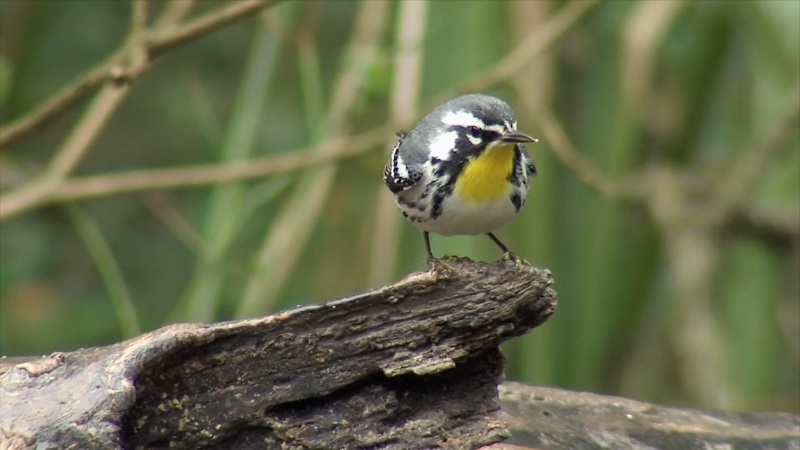
Wildlife tourism generates significant economic benefits while supporting conservation efforts throughout the state of Texas. Visitor spending on lodging, food, and services provides financial incentives for habitat protection and restoration—the Texas economy benefits by over $2 billion annually from nature-based tourism activities.
Local communities are increasingly recognizing wildlife viewing as a sustainable economic development. Opportunity Conservation organizations use tourism revenue to fund habitat acquisition and restoration projects.
Educational components of wildlife trails help visitors understand conservation challenges and solutions.
Conclusion
Texas wildlife trails offer some of the most rewarding nature experiences available anywhere in North America. The ten trails featured here represent just a small sample of the incredible diversity awaiting discovery throughout the state.
From desert mountains to coastal prairies, from ancient forests to vast grasslands, Texas protects habitat for a fantastic variety of wildlife species.
Astute wildlife watchers opt for less crowded destinations in favor of hidden gems, where animals behave naturally and viewing opportunities often exceed expectations. Each trail offers unique ecosystems, specialized wildlife communities, and unforgettable experiences that create lasting connections with Texas’s natural heritage.
The key to successful wildlife viewing lies in proper planning, respectful behavior, and patient observation. Understanding seasonal patterns, weather impacts, and animal behavior dramatically improves your chances of memorable encounters.
Quality equipment enhances the experience, but it cannot replace the knowledge developed through regular practice.
Conservation depends on people who care enough to protect wildlife and habitat for future generations. Your visits support conservation programs, local economies, and educational efforts that benefit wildlife throughout Texas.
Start planning your first hidden trail adventure today and discover extraordinary wildlife encounters along paths you have probably missed until now.

